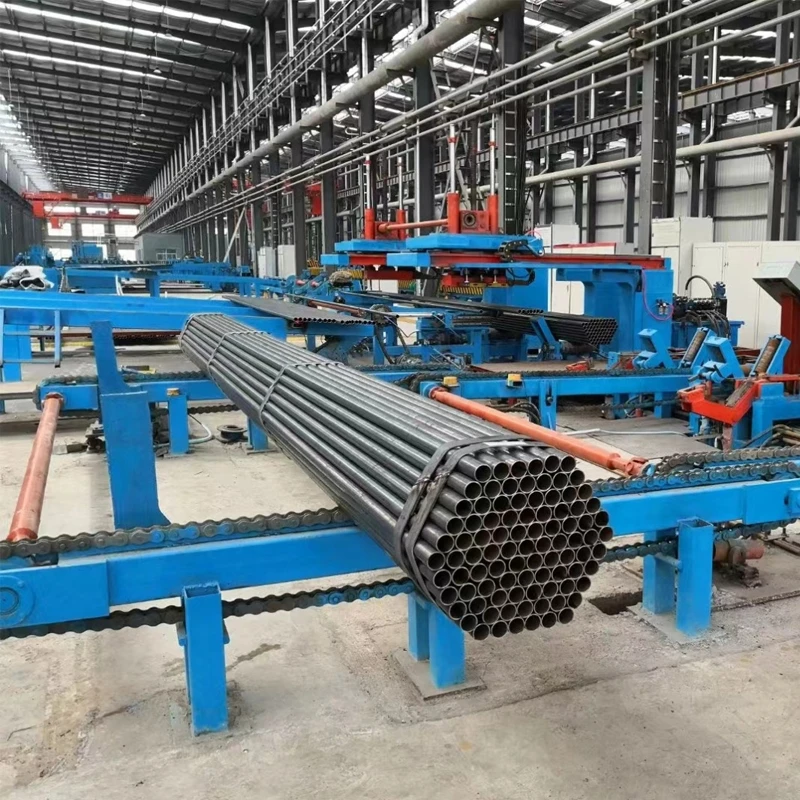bar straightening machine
The Bar Straightening Machine Revolutionizing Metal Processing
In the realm of metal fabrication and manufacturing, precision is paramount. One of the critical processes that ensure the quality and reliability of metal products is straightening. Metal bars, which are commonly used in various applications across industries, often require straightening after processes such as casting, rolling, or bending. This is where the bar straightening machine comes into play, a device engineered to enhance productivity and accuracy in the metalworking sector.
Understanding the Bar Straightening Machine
A bar straightening machine is designed specifically to rectify irregularities in metal bars. These machines are capable of handling a wide range of materials, including steel, aluminum, and other alloys. They operate by exerting precise force on the bar, gradually aligning it to achieve a straightened profile. This not only improves the aesthetic appearance of the product but also enhances its performance in subsequent manufacturing processes.
The Mechanism of Operation
The operation of a bar straightening machine involves several key components. Typically, the machine consists of a series of rollers or straightening heads arranged in a specific configuration. As the metal bar enters the machine, it passes through these rollers which apply uniform pressure at strategic points along the length of the bar.
The straightening process can be finely tuned based on the characteristics of the material being processed. By adjusting the spacing, speed, and pressure of the rollers, operators can achieve desired results depending on factors such as the original shape of the bar, material characteristics, and final product specifications.
Types of Bar Straightening Machines
There are several types of bar straightening machines available in the market, each designed to cater to specific requirements
. The most common types include1. Hydraulic Straightening Machines These machines use hydraulic systems to apply force, making them suitable for thicker and harder materials. They are highly efficient and can handle a variety of bar sizes and shapes.
bar straightening machine

2. Mechanical Straightening Machines Utilizing mechanical pressure, these machines are ideal for lighter materials and lower production demands. They are generally easier to maintain and operate.
3. Automatic Straightening Lines These are fully automated systems designed for high-volume production. They incorporate advanced technology, including sensors and control systems, to enhance precision and reduce human intervention.
Benefits of Using Bar Straightening Machines
The advantages of using bar straightening machines are manifold. Firstly, they significantly reduce the manual labor involved in straightening bars, leading to increased efficiency and reduced production costs. This automation also minimizes the risk of human error, ensuring a higher level of quality control.
Moreover, with the right straightening machine, manufacturers can achieve faster turnaround times. This is crucial in today’s fast-paced industrial environment where meeting deadlines is often as important as maintaining quality.
Not only do these machines improve the physical properties of metal bars, but they also enhance safety. Straight bars are less likely to cause accidents during handling, transport, and further processing.
Conclusion
In conclusion, the bar straightening machine plays a vital role in the metal processing industry. Its ability to transform imperfect bars into straight, usable products contributes significantly to the efficiency and effectiveness of manufacturing processes.
As technology advances, we can expect further innovations in bar straightening machinery, potentially incorporating features such as smart sensors and artificial intelligence for even greater precision and efficiency. For manufacturers looking to maintain competitive advantages, investing in high-quality bar straightening machines is a step towards achieving excellence in production and ensuring high standards in metalworking applications.
-
High Frequency Straight Seam Welded Pipe Production Line-BzZhou Xinghua Machinery Equipment Manufacturing Co., LTD.|Precision Welding, High EfficiencyNewsJul.30,2025
-
High Frequency Straight Seam Welded Pipe Production Line|BzZhou Xinghua|Precision Welding&EfficiencyNewsJul.30,2025
-
High Frequency Straight Seam Welded Pipe Production Line - BzZhou Xinghua|Precision Engineering&EfficiencyNewsJul.30,2025
-
High-Frequency Straight Seam Welded Pipe Production Line-BzZhou Xinghua Machinery Equipment Manufacturing Co., LTD.NewsJul.30,2025
-
High-Frequency Straight Seam Welded Pipe Production Line-BzZhou Xinghua Machinery Equipment Manufacturing Co., LTD.|Precision Manufacturing, High EfficiencyNewsJul.30,2025
-
High Frequency Straight Seam Welded Pipe Production Line-BzZhou Xinghua Machinery Equipment Manufacturing Co., LTD.|Precision Steel Pipe Manufacturing&Industrial EfficiencyNewsJul.29,2025


